Have you even been to Peru if you haven’t got an alpaca sweater?
Leaving Peru with an alpaca sweater is a rite of passage, on par with trekking to Machu Picchu or soaring over the Nasca Lines. Head to any of the Andean cities across the country and you’ll see hoards of tourists wearing colourful souvenirs, most of which are haggled for on the local markets.
Despite alpaca wool being available in abundance all over the country, buying genuine alpaca clothing isn’t as easy as you’d expect. The local markets might boast some of the lowest prices anywhere in the world but fakes are everywhere and it is easy to get scammed if you don’t know what you are looking for.
Never fear though, this guide to buying alpaca products in Peru will tell you everything you need to know, from how to spot the real thing to how much an alpaca sweater should cost.
Read more: (opens in new tab)
- Cheap and Free Things to Do in Lima, Peru
- Hiking Catarata de Gocta in Chachapoyas, Peru
- Eating Guinea Pig in Ecuador
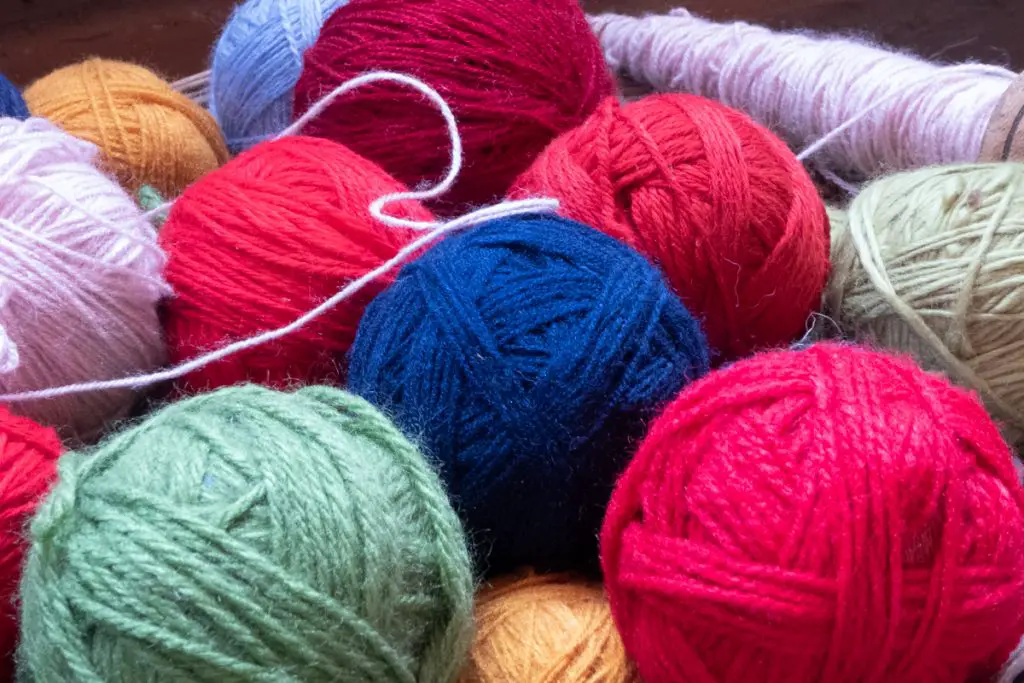
What is Special About Alpaca Wool?
Peru is home to four species of camelid: llamas, alpacas, guanacos and vicuñas. Of these mammals, the first two kinds have been domesticated. Guanacos and vicuñas live wild and are aggressive towards humans.
The wool of all of these animals is used and is valued (from best to worst) in this order:
- Vicuña
- Guanaco
- Alpaca (baby alpaca is best)
- Llama
The Vicuña produces the softest wool and therefore comes with the heftiest price tag. According to The Indian Express, jackets made from vicuña fibre can be as expensive as $18,595USD!
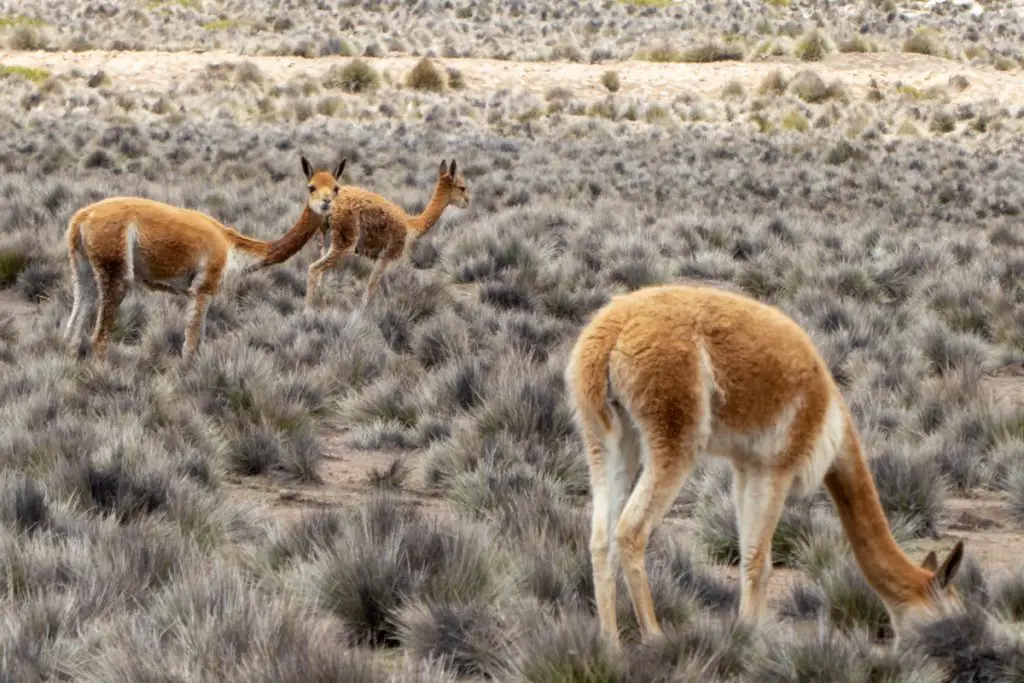
So, for those of us without eighteen grand burning a hole in our pocket, what is the best affordable alternative? Let’s look at the different types of wool on offer.
- Guanaco wool is super expensive, though not as much as vicuña. It is also very difficult to come by owing to the depleted numbers of these animals in the wild. (Guanacos were hunted relentlessly which had a big impact on their populations.)
- Llama fibre is readily available but their overcoat is much more coarse than any of the other camelids. This means the wool is better suited for making blankets and throws instead of clothing.
- Alpaca wool is very well suited for clothing because it is generally soft and more affordable than the alternatives. The highest quality of alpaca wool comes from the baby alpaca. The texture is softer which makes it ideal for sweaters.
Baby Alpaca Products
It is a common misconception that baby alpaca wool is obtained by shaving a baby alpaca. In fact, baby alpaca is a grade of alpaca wool. To be classified as baby alpaca, the grade of the wool must be between 21.5 and 23 microns.
The diameter of the fibres increases as the animal ages so even though baby alpaca wool does not have to come from a baby alpaca, the animal in question would likely have been young when shorn.
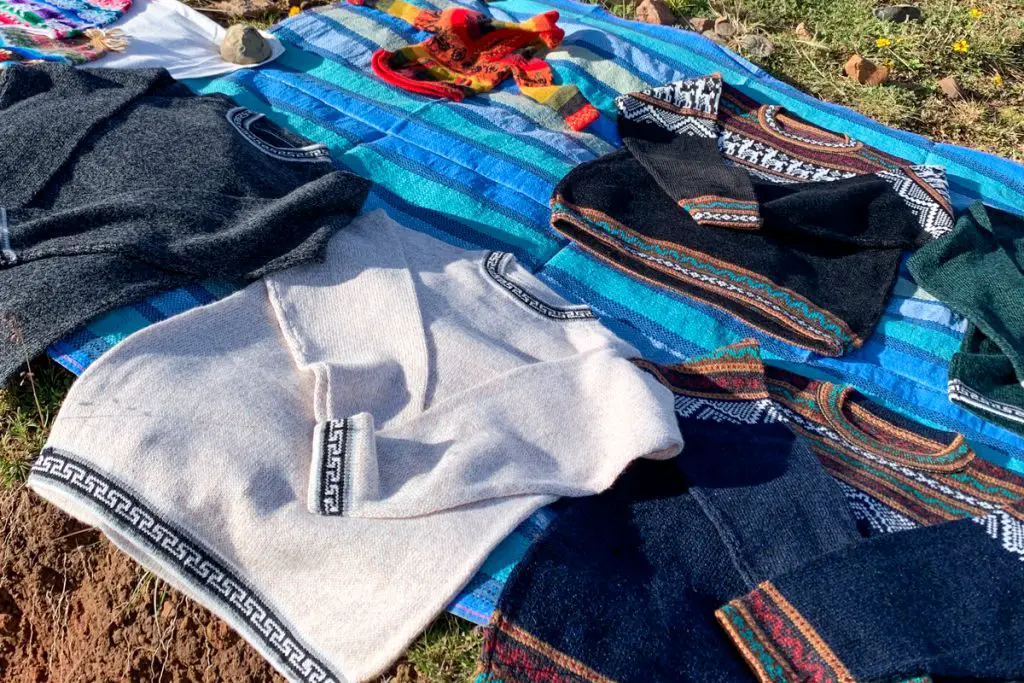
8 Top Tips for Purchasing Alpaca Sweaters in Peru
1. If it seems too good to be true, it probably is…
When you swing by any market in Peru, you won’t be able to breathe for the number of vendors approaching you, all claiming to sell alpaca products for a steal of a price.
But… the market is saturated with fakes. Plenty of shops and vendors claim that their product is 100% alpaca but if they are willing to sell the item to you for 50 soles, it is highly unlikely the item is of this quality.
For me, I wanted a traditional Peruvian sweater but was less concerned with the alpaca wool content. (What can I say? I’m a cheapskate.) That is why I only paid around $16USD for my jumper. It is a mix of synthetic materials with a low alpaca wool content, like most of the other cheap clothing on the markets. And like most of the other cheap clothing on the markets, it’s certainly not made of baby alpaca wool either!
2. 100% baby alpaca is hard to come by on markets
The highest quality alpaca wool is generally going to be in the high-end shops. You are very unlikely to find it on the markets and if you do, the price tag will reflect the quality.
Be very wary of market stalls claiming to sell sweaters that are 100% baby alpaca. If you are looking for real baby alpaca wool, you’ll need to pay around 50% more than you would for standard alpaca clothing.
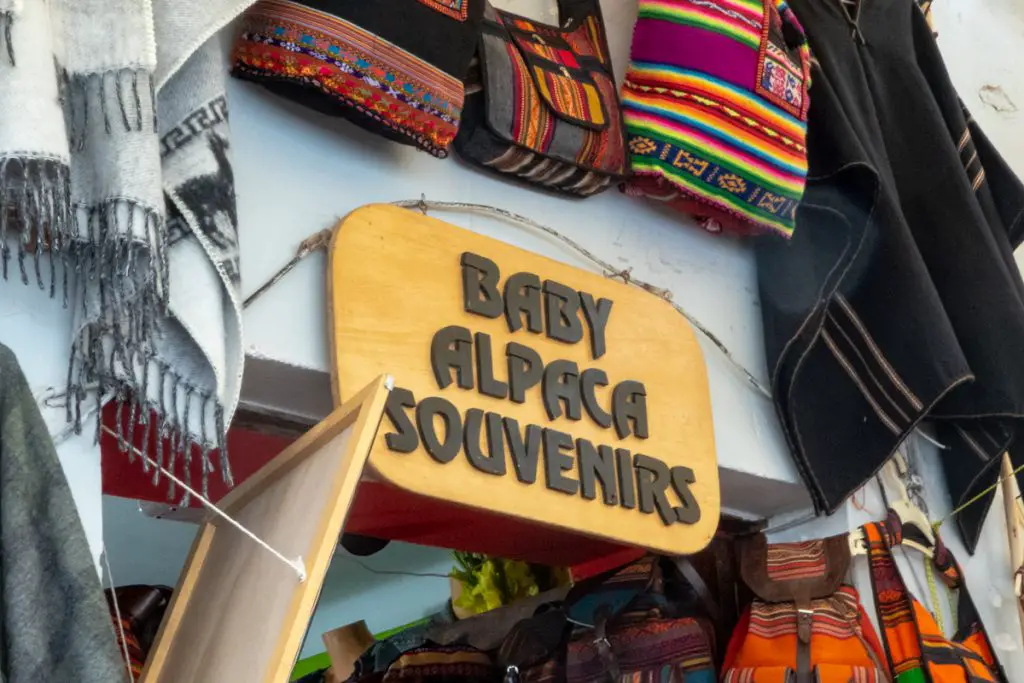
3. Alpaca wool shouldn’t be very itchy
Wool’s grading will impact how much it makes your skin itch. For something close to itch-free, you will want a sweater with a very small micron-count, like baby alpaca. If your budget won’t stretch to baby alpaca, don’t worry. The average grade of alpaca wool found on Peruvian markets also shouldn’t be very itchy.
It is important to remember that how much your skin itches, depends on how sensitive you are. However, a good rule is that if the product that you are trying on makes your skin itch a lot, it is probably a very low blend of alpaca, or more likely, not alpaca at all.
4. Baby alpaca is always more expensive
On average, baby alpaca products will be around 50% more expensive than standard alpaca wool products. This is because of its high quality and the fact that it is much rarer.
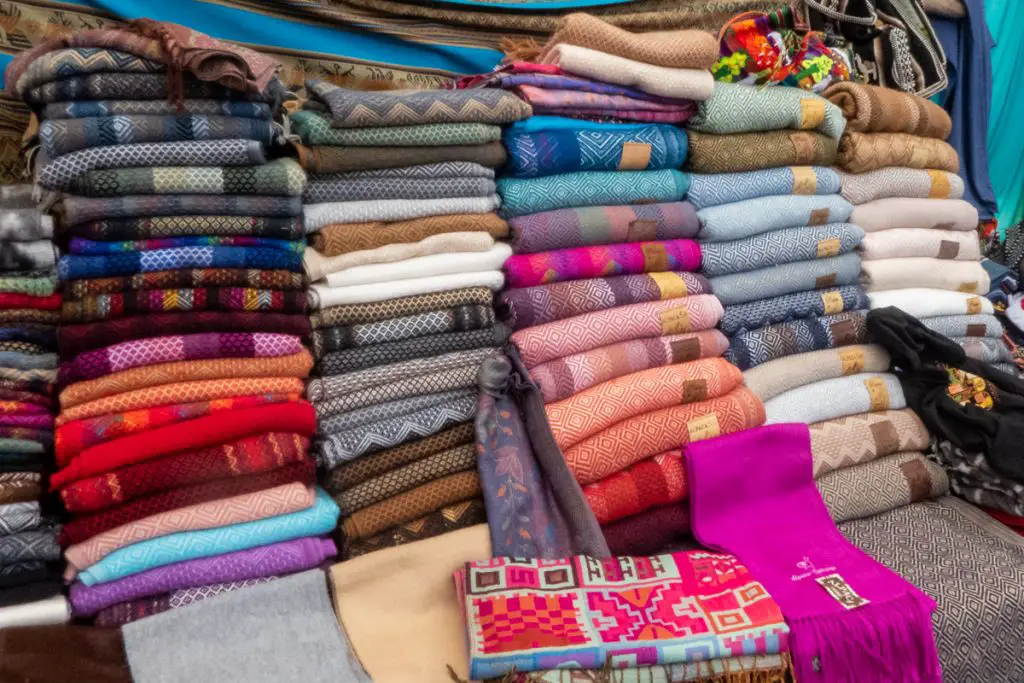
5. Alpaca wool is cold to the touch
Alpaca wool is a great insulator and it keeps you warm even when wet. This is why it has been long been a staple choice for many Andean people. This means that it will be smooth like cashmere and cold to the touch.
The best way to familiarise yourself with authentic alpaca wool is to head to the upmarket shops and have a feel. Walk around the stores and give all the 100% alpaca stuff a good stroke. By knowing what the real thing feels like, you’ll find it much easier to weed out the fakes and assess the worth of the product you are buying.
6. The sweater should feel heavy
Another good way to test the quality of the alpaca wool used in a sweater is to pick it up and feel how heavy it is. Alpaca fibres are very dense, much more so than other acrylics or wools. If you pick up a jumper in Peru and it feels unusually heavy compared to what you would expect, it is much more likely to be 100% alpaca.
7. Machine vs. handmade
Many of the ‘traditional’ Peruvian jumpers that you will see are all very similar. This is because they are made in factories to be mass-produced. These will be much cheaper to buy compared to handmade goods.
Traditional weaving by indigenous communities is precise but slow work and a poncho can take as long as three weeks to create! As a result, handmade goods will fetch a much higher price than mass-produced clothing, even if they both use alpaca fibres.
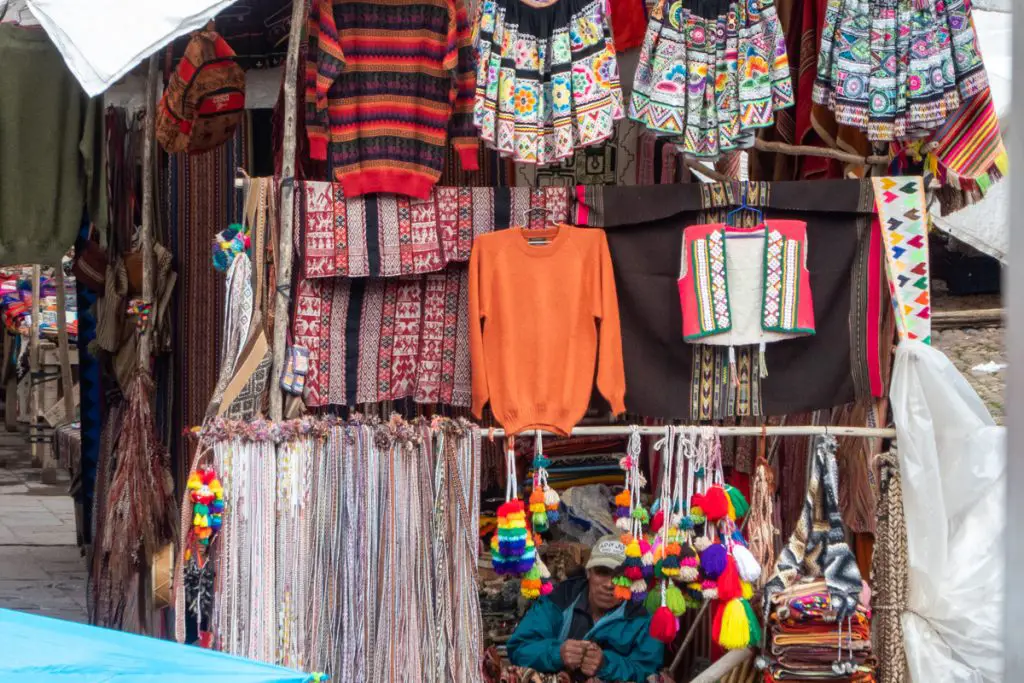
8. Always haggle
Don’t fall into the trap of feeling too awkward to negotiate the price. These vendors expect you to haggle and suggest their first price based on this assumption.
If you use everything you have learnt in this article to assess the quality of what you are buying, you will be well placed to negotiate a fair price. For example, if you are wanting to get a mass-produced, alpaca blend, you should haggle the price down low as these items aren’t worth much.
If you are haggling for something of a higher-quality, you will get to a point where the vendor will refuse to come down in price. If it is genuine baby alpaca and it is handmade, they won’t be able to afford to let it go for less than it’s worth.
As with any kind of haggling, don’t drive too much of a hard bargain. Remember that while you might want to get a good deal, these people still have to make a living.
If you’re looking to get something authentic and you are still afraid of getting shafted a fake, head to one of the more expensive shops (recommendations at the bottom) and prepare to part with your cash. It’ll be expensive but at least you’ll know you’re getting the real thing.
Buying Alpaca Clothing in Peru: FAQs
Where should I buy alpaca products in Peru?
It is possible to buy alpaca sweaters all over South America but you’ll see them sold mostly in Andean regions as alpacas naturally inhabit mountainous areas. In Peru specifically, the best cities in which to purchase alpaca wool products are Lima, Arequipa, Cusco and Puno.
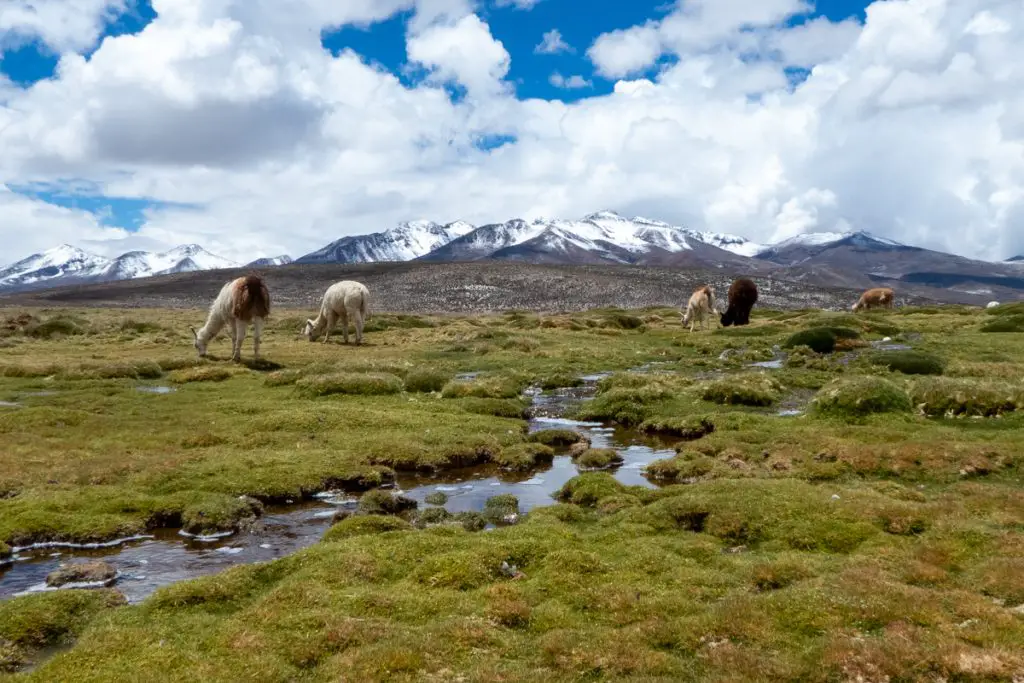
How do I wash a Peruvian alpaca sweater?
Peruvian alpaca sweaters should be washed on a low heat as they are prone to shrinking if washed hot. You should not put any alpaca wool product in the dryer and instead, allow it to dry on the line or radiator.
How much does an alpaca sweater cost in Peru?
It is very difficult to give an estimated cost for an alpaca sweater on a Peruvian market as prices vary wildly, depending on alpaca wool grade, blend and how skilled at haggling the purchaser is.
If you are buying an alpaca wool sweater from a shop in Peru, you can expect to pay somewhere in the region of $100-250USD.
Are there any recommended shops or markets in Peru for purchasing alpaca clothing?
In regard to specific shop/market recommendations, this really depends on what you are looking for. Those searching for 100% alpaca should make their way to upmarket stores whereas those going for fashion over quality may find a trip to the market suffices.
Mundo Alpaca – Arequipa
This is a good choice for authentic products of high quality. They actually have their own alpacas which live inside the grounds.
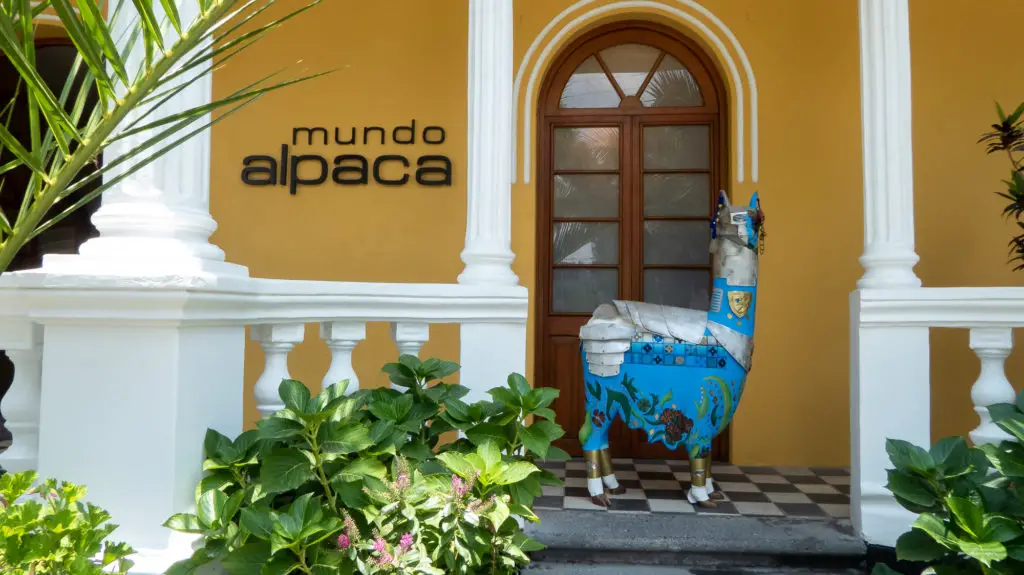
Kuna – Lima, Miraflores
Kuna is one of the most famous suppliers of alpaca products. Buying from them will be expensive but hey, you get what you pay for!
San Pedro Market – Cusco
You’ll mostly find mass-produced clothing that is a blend of alpaca on the market. This is good if you are looking for a cheap and cheerful travel souvenir. Always haggle.
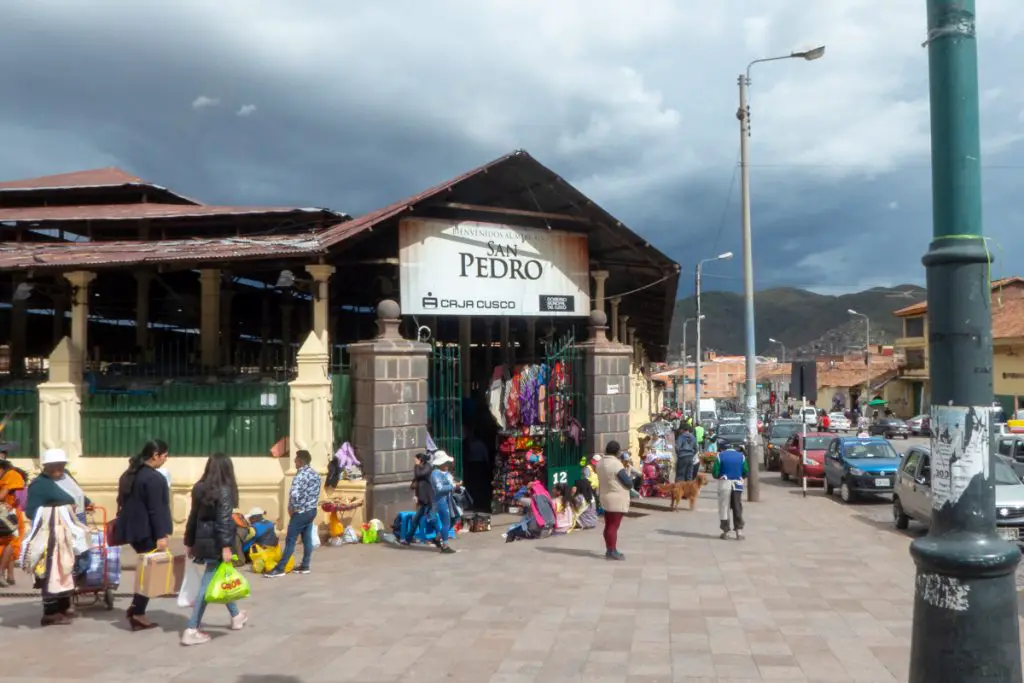
Have you bought anything made from alpaca wool in Peru?

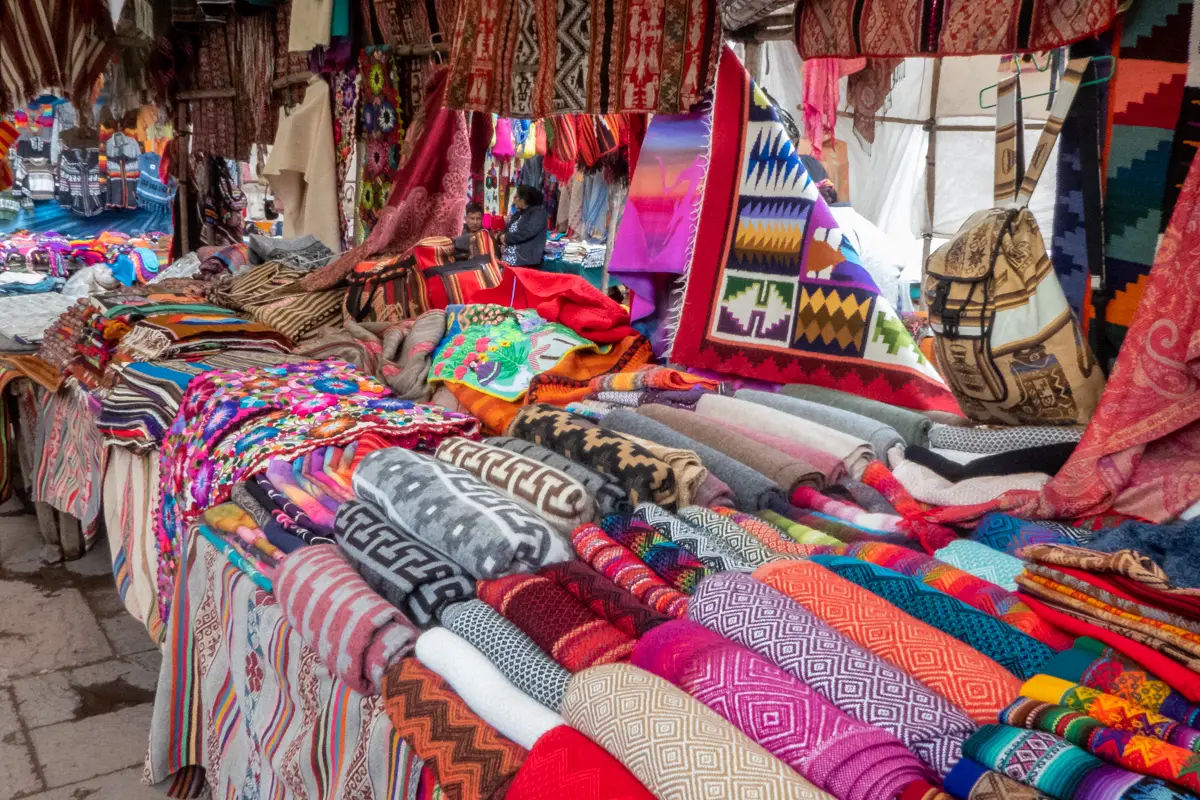

I love alpacas so I flew right to this post. We actually put in an offer on a house in the States across from an alpaca farm. I dreamed of weaving scarves… Unfortunately, the deal fell through. Some of these products look amazing!
Did you also know that alpacas are seriously trending for weird things like wedding photos? My best friend just sent me an article.
I think my favorite here is that baby alpaca fur is more expensive. Who knew?!
Oh my gosh, imagine an alpaca at a wedding?! That would be amazing! I have a friend that is getting married soon, maybe I’ll just check to see whether she knows this…
I’m working Peru into my upcoming travel plans and definitely pinning this article for future reference. I feel like I can potentially spot a fake alpaca product now. I’m holding on to the real alpaca wool is cold to the touch tip. Very insightful and thanks for sharing!
I think that is the easiest way to tell the real from the fake. It can be tricky if you don’t know what you’re looking for though!
I bought a sweater while visiting Peru but now I’m back in n.y. & want another sweater made of alpaca where do I go?
Hi Carolyn, there are recommendations in the article for websites you can buy from 🙂